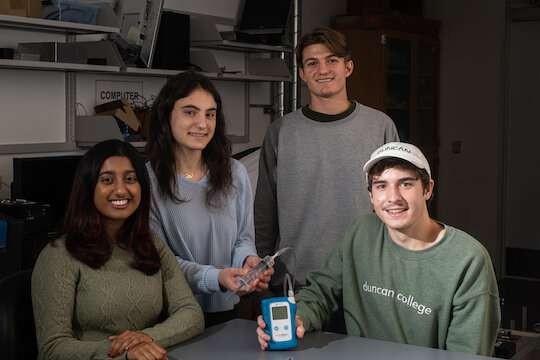This article has been reviewed according to Science X's editorial process and policies. Editors have highlighted the following attributes while ensuring the content's credibility:
fact-checked
trusted source
proofread
New device to help premature babies in developing countries breathe without damaging eyesight

A new medical device developed by Rice University students will help premature babies in developing countries receive life-saving oxygen without damaging their eyesight.
The World Health Organization estimates that up to 95% of the 2.4 million premature babies born each year require respiratory support. The best method of treatment is a traditional CPAP with an air-oxygen blender system, which is critical for maintaining appropriate levels of oxygen.
Unfortunately, these devices can cost thousands of dollars; therefore, medical providers in low-resource countries are often forced to improvise treatment. This can lead to complications including lung damage and/or retinopathy of prematurity, which occurs when premature babies get too much oxygen. Severe cases can lead to blindness.
"Avatar: The Last Air Blender," a Rice 360 team doing work at the Oshman Engineering Design Kitchen (OEDK), is made up of Harlan Cook, Ojas Dumbre, Brennan Keogh and Leora Maksoud. It set out to develop a simple, inexpensive air blender that could work without power, since electricity is not always readily available or reliable in low-resource settings.
The team based the 3D-printed device's design on a syringe. A plunger fitting into the syringe's tube is attached to a narrow cylinder that allows a stream of oxygen to flow through. Thanks to the Venturi effect, the oxygen content diffuses as it travels through the cylinder, and the plunger can be adjusted to vary the ratio of air to oxygen coming in. The end product is a low-cost device that delivers a safe level of oxygen to premature babies.
While the team is still fine-tuning its device, it hopes it will eventually be available for mass production and distribution to areas in need.



















